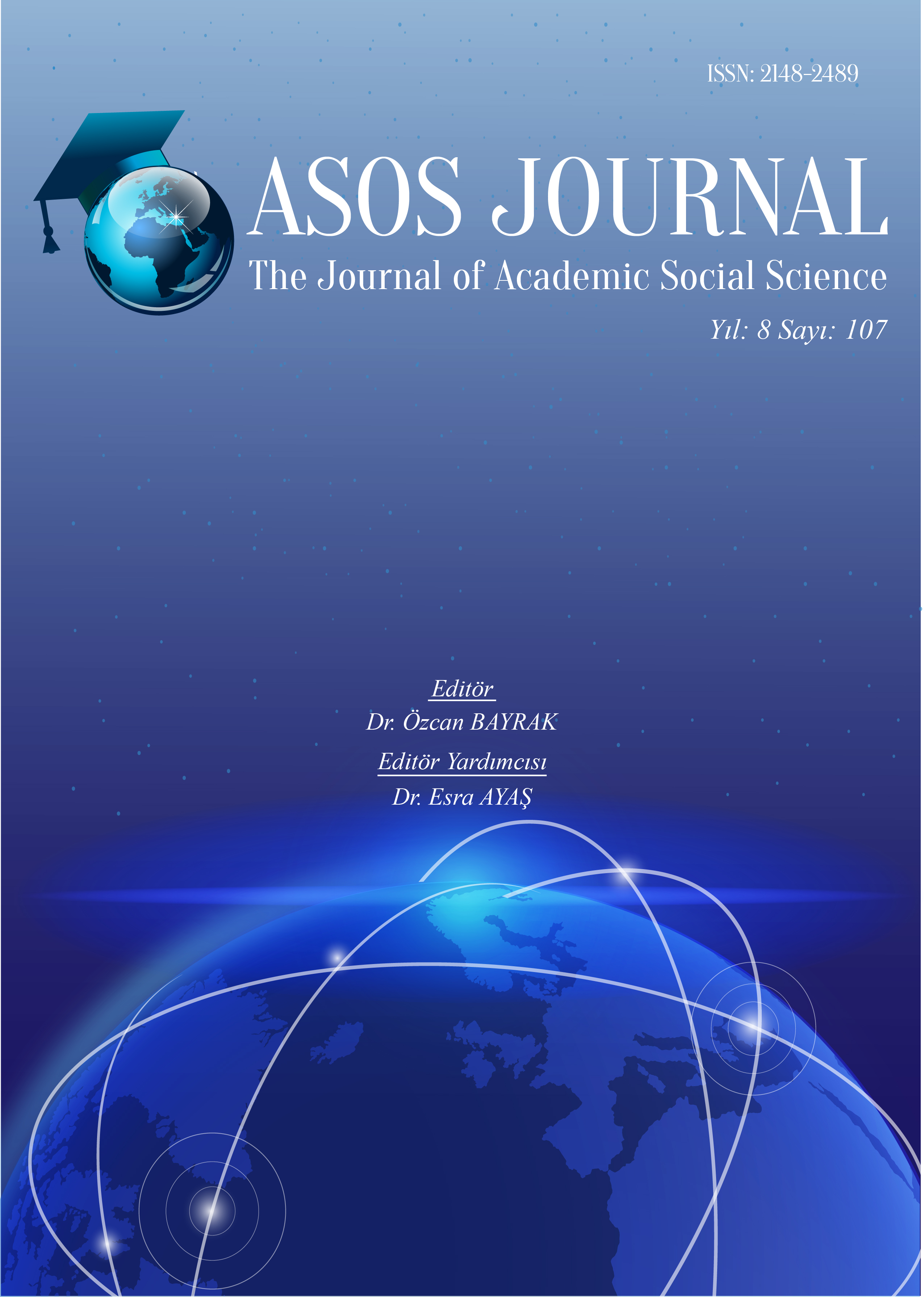Author :
Abstract
Sözlü çeviri, tüm bilişsel süreçleri göz önünde bulundurulduğunda son derece karmaşık bir etkinlik olarak göze çarpmaktadır. Bu, özellikle bilişsel süreçlerin aynı anda gerçekleştiği eş zamanlı çeviri için geçerlidir. Bu nedenle eş zamanlı çeviri burada bilişsel yönleri ile ele alınmıştır. Tercümanların sözlü çeviri esnasında genellikle bu zorlu görevi yerine getirmek için her türlü çabayı göstermeleri gerekir ve bu nedenle çoğu zaman büyük bir bilişsel zorlanmaya maruz kalırlar. Bu gibi durumlarda tercümanların performanslarının bozulması muhtemeldir. Tüm bu konular bu çalışmada ele alınacaktır. Ayrıca burada eş zamanlı çeviri alanında yapılmış çalışmalardan bahsedilmiş ve bu konuda deneysel bir uygulama yapılmıştır. Teori ve uygulama olarak iki kısıma ayrılan bu çalışma ile kuramsal çerçeve hakkında kısaca bilgi verilmiştir. Uygulama bölümünde ise profesyonel ve öğrenci tercümanlar arasında yapılmış deneysel bir çalışmaya yer verilmiştir. Çalışmanın uygulama aşamasından bahsedilerek sonuçları sergilenmiştir. Çalışmada öne sürülen varsayım bu şekilde kanıtlanmaya çalışılmıştır.
Keywords
Abstract
Interpretation is considered a highly complex activity given all cognitive processes. This applies to simultaneous translation, especially when cognitive processes occur at the same time. Therefore, simultaneous translation is discussed here with cognitive aspects. Interpreters often need to make every effort to perform this difficult task during interpretation, and therefore often suffer from a great cognitive strain. In such cases, the performance of interpreters is likely to deteriorate. All these issues will be discussed in this study. In addition, studies in the field of simultaneous oral translation were mentioned and an experimental application was made in this regard. In this study, which is divided into two parts as theory and application, brief information about the theoretical framework is given. In the application section, an experimental study between professional and student interpreters was included. The results were exhibited by mentioning the implementation phase of the study. The assumption suggested in the study was proved in this way.
Keywords
- Anderson, Linda. ―Simultaneous Interpretation: Contextual and Translational Aspects.‖ In Bridging Tha Gap: Empirical Research in Simultaneous Interpretation, edited by Barbara Moser-Mercer and Sylvie Lambert, 101-20. Amsterdam: John Benjamins Publishing, 1994.
- Baddeley, Alan. ―The Episodic Buffer - A New Component of Working Memory?‖ Trends in Cognitive Sciences 4, no. 11 (November 2000): 417-23. Accessed February 2016.
- Christoffels, Ingrid Katharine. ―Cognitive Studies in Simultaneous Interpreting.‖ PhD diss., University of Amsterdam, 2004.
- Christoffels, I. K., De Groot, A. M., & Kroll, J. F. (2006). “Memory and language skills in simultaneous interpreters: The role of expertise and language proficiency”. Journal of Memory and Language, 54(3), 324-345.
- Dell, G. S. (1986). “A spreading-activation theory of retrieval in sentence production”. Psychological review, 93(3), 283.
- Dell, G. S., & O'Seaghdha, P. G. (1992). “Stages of lexical access in language production”. Cognition, 42(1-3), 287-314
- Dillinger, Michael. Component Processes of Simultaneous Interpreting. Montreal: McGill University, 1989.
- Diriker, E. (2004). “De-/re-contextualizing conference interpreting: interpreters in the ivory tower?” (Vol. 53). John Benjamins Publishing.
- Eikmeyer, H. J., Schade, U., Kupietz, M., & Laubenstein, U. (1999). “A connectionist view of language production”. In Representations and processes in language production (pp. 205-236). Deutscher Universitätsverlag, Wiesbaden.
- Jescheniak, J. D. (1999). “”Accessing words in speaking: Models, simulations, and data. In Representations and processes in language production (pp. 237-257). Deutscher Universitätsverlag, Wiesbaden.
- Jescheniak, J. D., Schriefers, H., & Hantsch, A. (2003). “Utterance format effects phonological priming in the picture-word task: Implications for models of phonological encoding in speech production”. Journal of Experimental Psychology: Human Perception and Performance, 29(2), 441.
- Kalina, S.(1998) Strategische Prozesse beim Dolmetschen. Theoretische Grundlagen, empirische Fallstudien, didaktische Konsequenzen. Tübingen: Gunter Narr.
- Gerver, David. ―A Psychological Approach to Simultaneous Interpretation.‖ Meta 20, no. 2 (1975): 119-28. Accessed May 20, 2015. http://id.erudit.org/.
- Gerver, David. ―The Effects of Source Language Presentation Rate on the Performance of Simultaneous Conference Interpreters.‖ In Interpreting Studies Reader, edited by Franz Pöchhacker and Miriam Schlesinger. 52-66. London: Routledge, 2002.
- Gile, Daniel. Basic Concepts and Models for Interpreter and Translator Training. Rev. ed. Amsterdam: John Benjamins Pub., 2009.
- Gile, Daniel. ―Testing the Effort Models Tightrope Hypothesis in Simultaneous Interpreting - A Contribution.‖ Journal of Linguistics, no. 23 (1999): 153-71.
- Gile, Daniel, Gyde Hansen, Heidrun Gerzymish-Arbogast, and Andrew Chesterman. ―How Do Experts Interpret?‖ In Efforts and Models in Interpreting and Translation Research: A Tribute to Daniel Gile. Amsterdam: Johns Benjamins, 2008.
- Isham, William P. ―Memory for Sentence Form after Simultaneous Interpretation: Evidence Both for and against Deverbalization.‖ In Bridging the Gap: Empirical Research in Simultaneous Interpretation, edited by Barbara MoserMercer and Sylvie Lambert, 191211. John Benjamins Publishing, 1994.
- Lambert, Sylvie. ―Information Processing Among Conference Interpreters: A Test of Depth- of-Processing Analysis.‖ Meta, 1988. Accessed June 10, 2015. http://id.erudit.org.
- Levelt, Willem J. M. Speaking: From Intention to Articulation. Cambridge, Mass: Massachusetts Institute of Technology, 1989.
- Levelt, W. J., Roelofs, A., & Meyer, A. S. (1999). “A theory of lexical access in speech production”. Behavioral and brain sciences, 22(1), 1-74.
- Liu, Minhua, Diane L. Schallert and Patrick J. Carroll. Working Memory and Expertise in SI. 2004. Accessed November 5, 2015. http://www.miis.edu/media/view/36120/original/liu_schallert_carroll_2004_wo rking_memory_and_expertise_in_si.pdf.
- Moser-Mercer, Barbara. ―Process Models in Simultaneous Interpretation.‖ In The Interpreting Studies Reader, edited by Franz Pö chhacker and Miriam Schlesinger, 148-59. London: Routledge, 2002.
- Moser-Mercer, Barbara, Sylvie Lambert, Valeria Daró, and Sarah Williams. ―Skill Components in Simultaneous Interperting.‖ In Conference Interpreting: Current Trends in Research. Proceedings of the International Conference on Interpreting: What Do We Know and How? John Benjamins, 1997. 133-48.
- Padilla, F., Bajo, M. T., & Macizo, P. (1995). “Articulatory suppression in language interpretation: Working memory capacity, dual tasking and word knowledge”. Bilingualism: Language and Cognition, 8(3), 207-219.
- Pöchhacker, Franz. Introducing Interpreting Studies. London: Routledge, 2004.
- Schacter, Daniel L. ―Implicit Memory: History and Current Status.‖ Journal of Experimental Psychology 13, no. 3 (1987): 501-18. Accessed November 2015. http://www.unt.edu/rss/class/mike/5640/articles/Schacterimplicitmem87.pdf.
- Setton, R. (1999). Simultaneous interpretation: A cognitive-pragmatic analysis (Vol. 28). John Benjamins Publishing.
- Timarová, Šárka. ―Working Memory and Simultaneous Interpreting.‖ In Translation and Its Others. Selected Papers of the CETRA Research Seminar in Translation Studies. 2007, 1-28. 2008.
